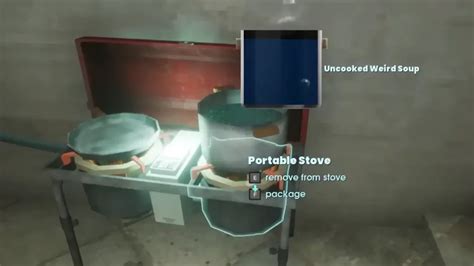Soup Recipes: Considering the Abiotic Factors
This blog post explores the fascinating intersection of cooking and environmental science, specifically focusing on how abiotic factors influence the creation of delicious soups. We’ll delve into the impact of water, temperature, and even sunlight on the ingredients and the overall outcome of your soup-making adventures.
Understanding Abiotic Factors in Cooking
Before we dive into specific recipes, let's define what abiotic factors are. In ecology, abiotic factors are non-living components of an ecosystem. In the context of cooking, these are the non-living elements that directly affect the taste, texture, and overall quality of our food. Think about it: your ingredients are the "biotic" part – the living organisms, like vegetables, meats, and grains. But things like water quality, temperature control, and sunlight exposure (for growing ingredients) are the abiotic factors we’ll be considering.
The Crucial Role of Water
Water is the lifeblood of any good soup! Its quality significantly impacts the final product. Hard water, rich in minerals, can leave a chalky residue and affect the flavor profile. Soft water, on the other hand, may lack the minerals needed to enhance certain flavors. The type of water you use will influence the taste and texture of your soup, particularly noticeable in broths and vegetable soups. Considering the source and mineral content of your water is a crucial abiotic factor.
Temperature's Impact: From Simmer to Boil
Temperature is another critical abiotic factor. A gentle simmer allows for flavors to meld slowly, resulting in a rich and complex broth. A rolling boil can break down ingredients too quickly, leading to a mushy texture and a loss of delicate flavors. Precision in temperature control is essential for soups, especially those containing delicate vegetables or seafood. Using a thermometer for consistent temperature is recommended.
Sunlight's Influence on Ingredients
While less direct, sunlight affects the growth and quality of ingredients used in soups. The sun's energy directly impacts the taste and nutritional value of vegetables and herbs grown in your garden or obtained from local farms. Consider sourcing seasonal ingredients grown under optimal sunlight conditions for the most flavorful soup. This indirect abiotic factor should not be ignored.
Soup Recipes: Highlighting Abiotic Factors
Let's apply this knowledge to a few soup recipes, emphasizing the influence of abiotic factors:
Simple Vegetable Soup
This recipe highlights the impact of water quality and temperature control. Using filtered water enhances the subtle flavors of the vegetables, while carefully simmering prevents overcooking and ensures a tender texture.
Ingredients:
- 4 cups filtered water
- 2 carrots, chopped
- 2 celery stalks, chopped
- 1 onion, chopped
- 2 potatoes, chopped
- 1 can (14.5 oz) diced tomatoes
- Vegetable broth (optional)
- Seasoning to taste.
Instructions:
- In a large pot, bring the filtered water to a gentle simmer over medium heat.
- Add the carrots, celery, and onion and cook until slightly softened.
- Add the potatoes and diced tomatoes.
- Reduce heat to a low simmer and cook until the vegetables are tender (approximately 20-25 minutes), regularly checking to ensure the consistency is not too mushy.
- Add vegetable broth if needed to adjust consistency.
- Season to taste with herbs and spices.
Creamy Tomato Soup
This recipe shows how precise temperature control affects the texture and taste. Overcooking can lead to a bitter taste and a grainy texture.
Instructions: (Ingredients would be similar to the above, but you would blend and add cream to create the creamy texture.)
- Use low heat throughout the entire cooking process to prevent burning and to allow the flavors to develop gently without excessive breakdown of the tomatoes.
- Avoid high temperatures during the blending process, as this could lead to overheating and a less desirable creamy texture.
By thoughtfully considering these abiotic factors, you can elevate your soup-making skills to a whole new level. Remember, a perfect soup is not only about the ingredients, but also about the interplay of these non-living components that subtly yet powerfully shape the final outcome. Happy cooking!
